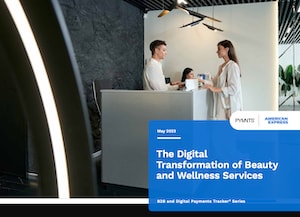February 22, 2024
Healthcare Industry: Emerging Technologies and Trends

Healthcare technology is poised to reshape the healthcare industry as we know it, providing more advanced and efficient patient care. Just as other industries have adapted and evolved as new technologies emerged, both large and small healthcare companies should keep up with technology trends to not only stay competitive but to provide the best possible patient outcomes, as well.
Here’s a closer look at the trends that have the potential to change the industry for the better.
Emerging Healthcare Technologies
Emerging technologies in the healthcare industry are being introduced at a rapid pace, bringing with them the promise of improved treatment options and more efficient care. This is especially important for healthcare facilities that seek solutions to deal with staffing shortages or other limitations. Some of the healthcare technology advances to watch going forward include:
Electronic Health Records
Emerging health information technology has made it possible to maintain health records in a centralized, cloud-based portal, which provides health care professionals and patients with instant access to medical histories. As such, healthcare providers using electronic medical record systems have all the information they need at their fingertips, which can be crucial in the case of an emergency, if there is a language barrier, or if a patient is unable to communicate.
This type of healthcare technology is also ideal when doctors from different hospitals or medical offices need to collaborate to determine the optimal way to treat patients’ conditions, especially if the patients have complex medical files or diagnoses.
Wearable Tech
Today’s smartwatches and other wearables do a lot more than count steps. They can monitor heart rates, track sleep patterns, detect heart issues like atrial fibrillation, take your temperature, act as electrocardiogram (ECG) and blood pressure monitors, and more. Patients can monitor their own health, which can help identify potential problems. They can also share data with their physicians as needed. Wearables can also be helpful to monitor post-surgical patients and track their vital signs.
Beyond smartwatches, other wearable medical devices are coming to market (or are already being used) that let patients and their healthcare providers monitor glucose levels, oxygenation levels, and measure hand movement in Parkinson’s patients. In the future, other wearable technology may be embedded in eyeglasses, clothing, and other devices.
3D Bioprinting
The invention of 3D printing is another transformative new technology in the healthcare industry. 3D bioprinting enables physicians to print artificial limbs, organs, joint replacement parts, and bio tissues. In addition, there are ongoing experiments in pharmacology to print pills and other medications. Lastly, 3D printers can also help create medical devices and surgical tools.
Robotics
The robotics industry has made great strides in recent years. Medical robots can help surgeons perform precise and targeted procedures and therapies. Though doctors still control the surgery, robots take away the possibility of human error and can potentially reduce infections. Healthcare robots are also poised to take over clerical and routine tasks to free up nursing and other healthcare professionals to focus more on direct patient care.
The Bottom Line
The future of medicine and patient care should increasingly rely on health technology, which is why healthcare organizations should embrace emerging healthcare technologies to stay relevant in the coming years. By exploring healthcare tech trends and becoming an early adopter of new innovations, even small healthcare providers can provide cutting-edge care.
Photo: Getty Images








